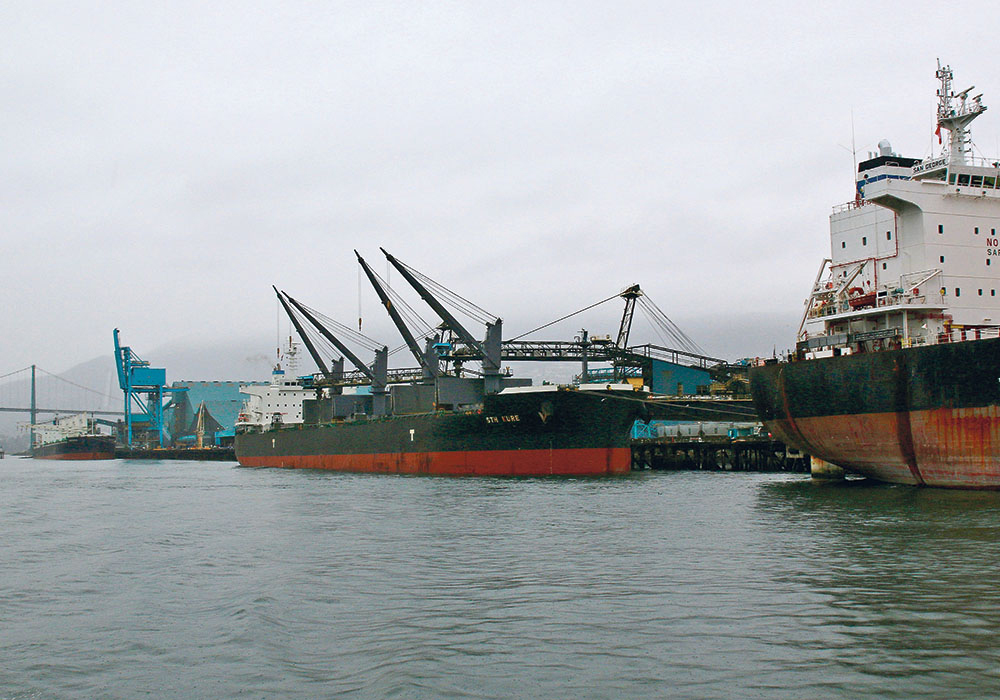Sinclair Harrison used to be astounded when he’d hear about how grain loading in the Port of Vancouver would be halted by rain.
The idea that millions of tonnes of farmers’ grain could be stalled from getting onto ships due to rainy weather stunned the pragmatically minded Saskatchewan farm leader. After all, doesn’t it rain quite often in Vancouver?
“Get some Saskatchewan farmers out there with some tarps and they’d solve that problem pretty fast,” was his typical exasperated response to the “it rained” excuse for bad crop movement through the system. Back in the 1990s and 2000s that used to drive him crazy.
Read Also

U.S. softens fees on Chinese shipping
The U.S. starts charging new fees on Chinese ships on Oct. 14. What are the ramifications for their ag exports?
Alas, the solution isn’t so simple, it seems. In fact, things have gotten trickier since 2007, when arbitrators found that longshore workers had legitimate safety concerns about working around open hatches on cargo ships in wet and slippery weather. More than just tarps to keep the grain dry, terminal operators now must ensure the workers are safe by having them erect rails and barriers to ensure nobody ends up plummeting into the hold.
This takes three to four hours to set up, and another three to four hours to dismantle — each time. That’s a lot of unproductive labour the grain system is required to pay for, all of which comes out of the farmgate price of grain. Instead of that enormous investment of labour each time it rains, the terminals generally just give up on loading and wait for the rain to stop. That’s not very efficient.
The good news is that the federal government is expected to soon sit down with the various players in the grain-handling system to try to hammer out a plan to fix the situation. The feds don’t like all those cargo ships bottled up there, exacerbating inflation, spewing fumes and posing safety hazards in and around the port. Grain ships are a big part of that problem.
Rain is never likely to stop falling in Vancouver every other day, but there’s no reason a reasonable solution can’t be found to deal with the practical realities of running a grain-loading port in a rainy place.
There are no doubt many frazzling complications in finding quick, simple and affordable methods of covering cargo ship hatches from the falling rain during grain loading. It’s hard to believe terminal operators, ship captains and longshore workers want to sit around looking at the falling rain rather than getting on with doing something productive.
It’s also hard to imagine that we can’t come up with a solution to this absurdity. After all, we presume to believe we know what happened in the first nanoseconds after the Big Bang. We created effective vaccines for COVID-19 in less than a year. We can get Amazon to ship us dog diapers overnight.
Futurologists wax eloquently about the potential gains from artificial intelligence, nanotechnology, 3D printing and virtual reality.
Surely, we must be able to figure out some way to load grain in the rain.
This is not something farmers should be leaving to the other players, whether railways (who are annoyed by trains getting backed up), terminal operators, port authorities, unions or exporters. They’re all frustrated by the craziness of the situation, but they just add its cost to the price of moving grain, which always ends up as a deduction from the farmer’s buck. They’d prefer not to have these costs, but it’s nice to have somebody else who can be the final absorber of inefficiencies.
This is farmers’ grain. The costs are farmers’ costs.
This is the farmers’ problem and it’s time to fix it.


















